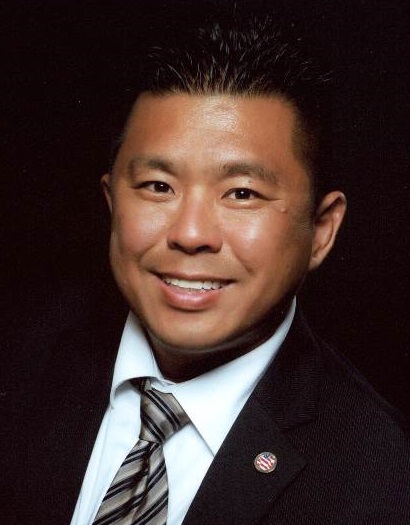Taking the 'work' out of Networking
Swedes tend to value a reserved approach to both life and business, so learning about networking habits for business in the U.S. can be helpful. Networking expert Henry Chang shares some strategies.
-
 Henry Chang, senior account executive at TelePacific Communications, president of APAPA and networking expert, gave a lively presentation at the recent SACC-SF/SV Lunch & Learn event.
Henry Chang, senior account executive at TelePacific Communications, president of APAPA and networking expert, gave a lively presentation at the recent SACC-SF/SV Lunch & Learn event. -
-
By Sofia Englund
-
 SACC-SF's lunch & learn program encourages good networking habits. Above, SACC-SF/SV Summer European Networking Evening.
SACC-SF's lunch & learn program encourages good networking habits. Above, SACC-SF/SV Summer European Networking Evening. -
-
Networking is built on the concept of keeping the conversation going, preferably with as many people as possible contributing. Say the word “networking,” and you can expect quite different reactions from American or Swede.
-
While after-hours networking is deeply rooted in American business culture, where professionals tend to "mix business with pleasure" and take every opportunity to meet new people and promote their ventures, Swedes have traditionally safeguarded the borders separating private and professional life.
-
The Swedish culture, centered as it is on the value of “lagom” (“the golden middle road”), has a tendency to value a reserved approach to both life and business, one less likely to encourage the promotion of one's accomplishments.
-
Swedes have a conversational culture which treasures silences. Conversational practice is heavily “turn based,” replete with definite pauses to signify the closure of a point, and in the farthest north of Sweden they have even managed to reduce all conversation to a single intake of breath.
-
Americans, however, do not normally like silence; in conversation, silence is often equated with the pejorative “awkward silence.” Hence, the common American conversational approach tends toward a practice of “layering,” where each participant contributes with additional information in rapid succession, playing off and overlapping what has previously been said.
-
It is not surprising then that many Swedes who arrive in the U.S. find themselves feeling somewhat like a fish out of water when it comes to socializing with strangers as part of the work environment. For many of us Swedes, networking simply does not come naturally and it is easy to feel a bit intimidated by the American cultural aptitude for it.
-
To help Swedish expats navigate the American networking scene and improve their skills, the Swedish-American Chamber of Commerce in San Francisco/Silicon Valley invited Henry Chang, senior account executive at TelePacific Communications, president of APAPA (Asian Pacific Islander American Public Affairs Association) and networking expert, to speak and answer questions a recent Lunch & Learn event.
-
Chang has spent the past 20 years networking at least two times a week as part of his professional career, and he has been very successful in developing and cultivating connections which have generated valuable business opportunities. He enjoys his work with the Chamber while supporting his wife, Swedish-American Charlotte Danielsson (chairwoman of SACC-SF/SV), as he continues to learn about Swedish business culture and traditions.
-
At the interactive Lunch & Learn event, Chang discussed different networking techniques and best practices:
-
How to Develop Good Networking Habits
Developing good networking habits is a 24-hour process. You need to develop your own strategies, using techniques with which you feel comfortable. We can all develop our own unique styles of networking; employ something of your own idiosyncratic Swedish approach in order to ensure that you stand out. -
1. Define networking goals. In order to be successful at networking, it is important to start by defining your goals: Who is your prospect and who is your ideal business partner?
-
2. Search the web and check LinkedIn to identify which organizations and individuals make most sense to connect with.
-
3. Join a business organization or get involved in a non-profit in order to expand networking opportunities.
-
4. Always arrive early to events. In this way you can connect with the leadership of the organization and establish a connection with people early on, thus avoiding the risk of finding yourself outside of already established groups.
-
5. If you haven't received the list of attendees beforehand, take a look at the name tags on the registration desk and identify the people you want to talk to.
-
6. Ask open questions (that cannot be answered by a simple “yes” or “no”), establish a rapport and if it is a good fit, present your “elevator pitch.”
-
7. Introduce people to each other, this is always a good way of starting a conversation.
-
8. If you find yourself alone, look for groups of odd numbers; these are always the easiest groups to “break into.”
-
9. If you find it hard to leave a conversation, ask for the business card as a polite way to excuse yourself and move on.
-
10. Always follow-up quickly; send a thank-you email or postcard suggesting a meeting. If you add someone on LinkedIn, make sure to include a personal note.
-
“If done with confidence, networking can be fun and challenging,” says Chang. “In many ways it is like dating, you need to find the right fit, present yourself well and build a relationship. This requires a time commitment. It won’t happen overnight, but once you find a good partner, you can do really well.”
-
More Lunch & Learn
Don’t miss the upcoming Lunch & Learn on Oct. 16: “How to Create an Effective Social Media Campaign.” At this inspirational lunchtime session, social media expert Preeti Moberg will answer your questions on how to create an effective social media campaign, identify target audiences and create outstanding online marketing material. For more information and registration, visit www.sacc-sf.org -
-
